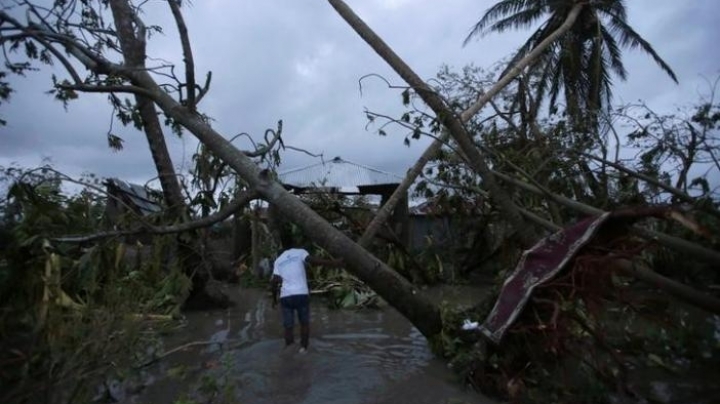Hurricane Matthew hits Florida as Haiti death toll rises

Matthew, the first major hurricane threatening a direct hit on the United States in more than 10 years, lashed Florida on Friday with heavy rains and winds after killing at least 339 people in Haiti on its destructive march north through the Caribbean, reports Reuters.
Although the hurricane was downgraded to a Category 3 storm as it approached the U.S. mainland, winds gusts of up to 113 kph and heavy downpours were still reported across coastal communities in Florida, the National Hurricane Center said in an advisory.
More than 140,000 Florida households were without power, according to Governor Rick Scott. In West Palm Beach, once lit street lights and houses went dark and Interstate 95 was empty as the storm rolled through the community of 100,000 people.
Hurricane Matthew was carrying extremely dangerous winds of 195 kph after pounding the northwestern part of the Bahamas en route to Florida's Atlantic coast earlier, the U.S. National Hurricane Center said.
Matthew's winds had dropped on Thursday night and into Friday morning, downgrading it to a Category 3 on the five-step Saffir-Simpson scale of hurricane intensity, where it could either plow inland or tear along the Atlantic coast through Friday night, the Miami-based center said.
Few storms with winds as powerful as Matthew's have struck Florida, and the NHC warned of "potentially disastrous impacts." The U.S. National Weather Service said the storm could be the most powerful to strike northeast Florida in 118 years.
Hurricane conditions were expected in parts of Florida on Friday and a dangerous storm surge was expected to reach up to 3.35 meters along the Florida coast, Ed Rappaport, deputy director of the Miami-based NHC, said on CNN.
Some 339 people were killed in Haiti, local officials said, and thousands were displaced after the storm flattened homes, uprooted trees and inundated neighborhoods earlier in the week. Four people were killed in the Dominican Republic, which neighbors Haiti.
Damage and potential casualties in the Bahamas were still unclear as the storm passed near the capital, Nassau, on Thursday and then out over the western end of Grand Bahama Island.
It was too soon to predict where Matthew might do the most damage in the United States, but the NHC's hurricane warning extended up the Atlantic coast from southern Florida through Georgia and into South Carolina. More than 12 million people in the United States were under hurricane watches and warnings, according to the Weather Channel.
The last major hurricane, classified as a storm bearing sustained winds of more than 177 kph, to make landfall on U.S. shores was Hurricane Wilma in 2005.
NASA and the U.S. Air Force, which operate the nation’s primary space launch site at Cape Canaveral, have already taken steps to safeguard personnel and equipment.
A team of 116 employees was bunkered down inside Kennedy Space Center's Launch Control Center to ride out the hurricane.
Roads in Florida, Georgia and North and South Carolina were jammed, and gas stations and food stores ran out of supplies as the storm approached early on Thursday.
Those three states as well as North Carolina declared states of emergency, empowering their governors to mobilize the National Guard.
President Barack Obama called the governors of the four states on Thursday to discuss preparations for the storm. He declared a state of emergency in Florida and South Carolina, a move that authorized federal agencies to coordinate disaster relief efforts. Late Thursday, Obama declared an emergency in Georgia and ordered federal aid to the state.
- Jamaica and Haiti threatened by Hurricane Matthew, government issues warning
- Haiti braces for deadly storm as hurricane gets closer to island
- Hurricane Matthew hits Cuba after striking Haiti and Dominican Republic
- Hurricane Matthew killed at least 39 people, heads toward Florida
- Hurricane Matthew: At least 136 people killed in Haiti, officials say
- At least 269 people killed as Hurricane Matthew head towards United States